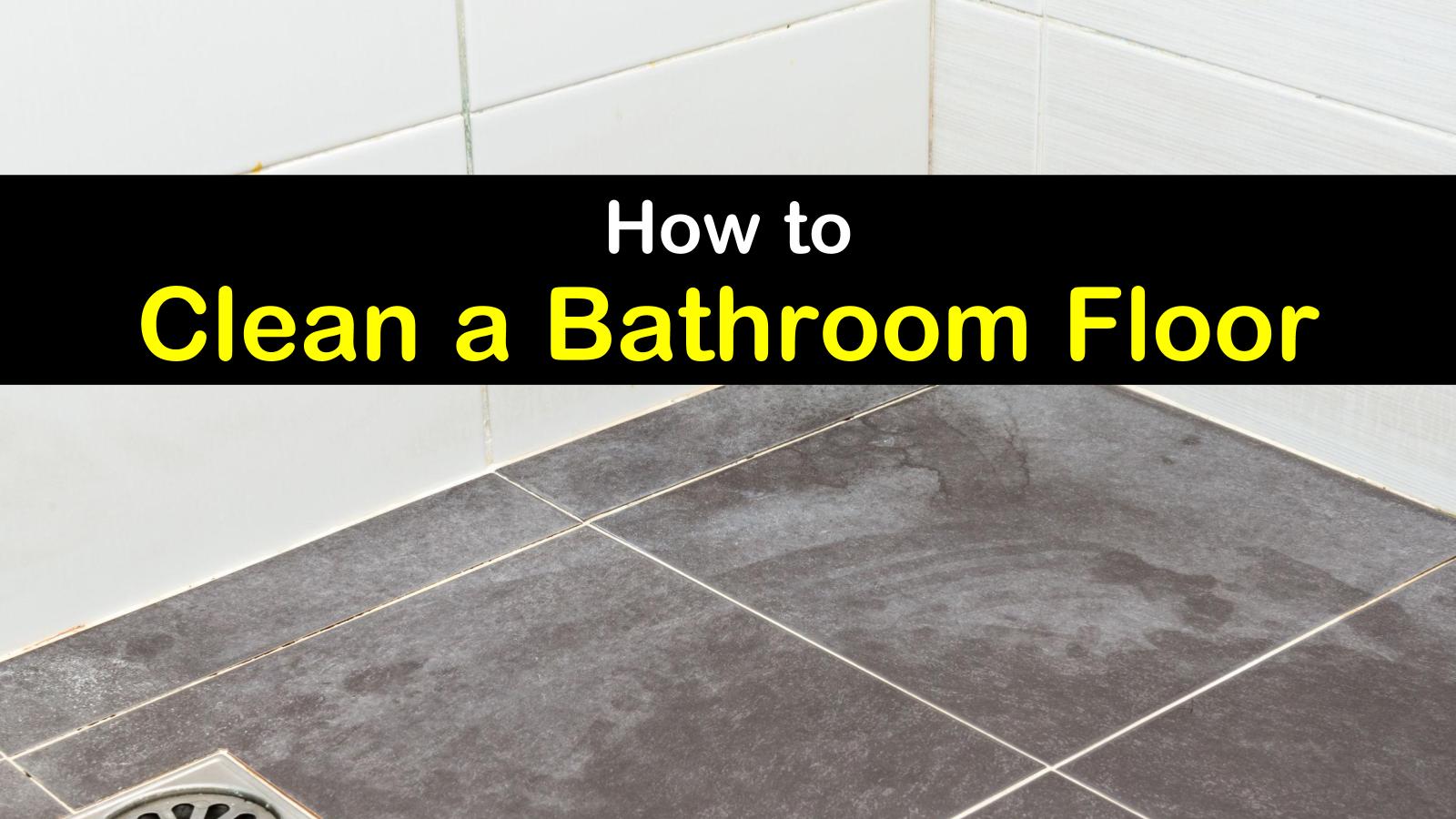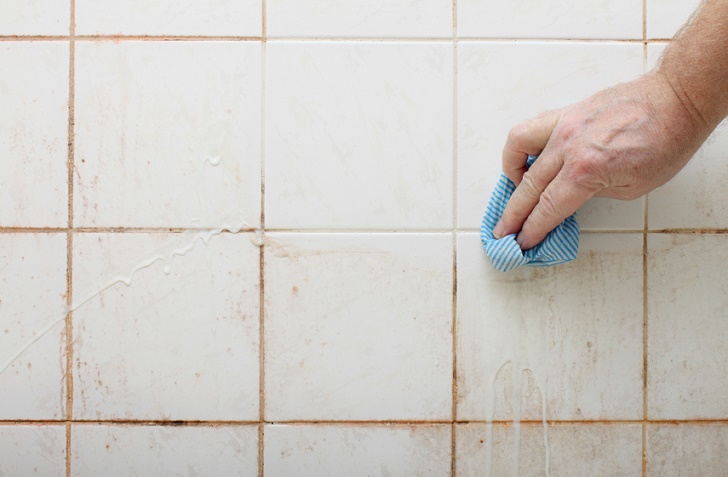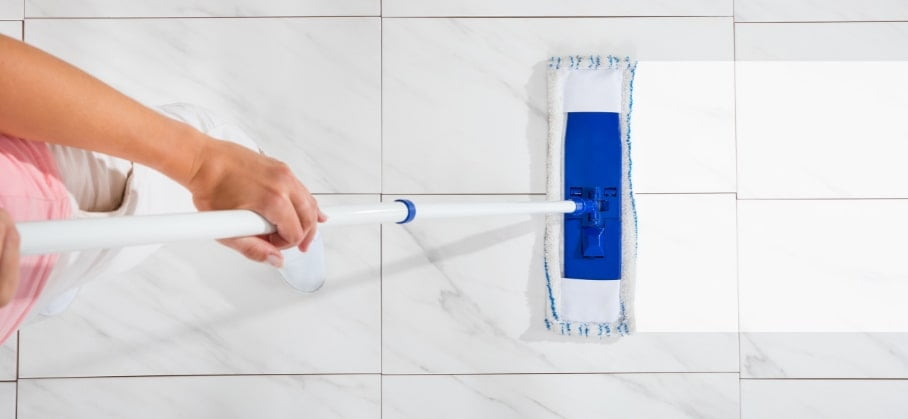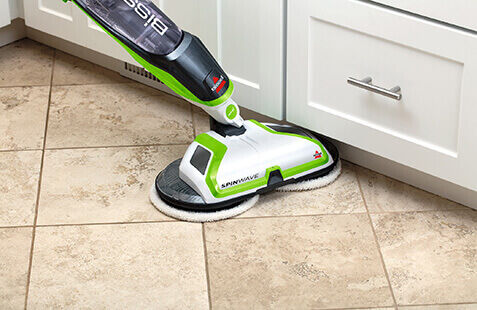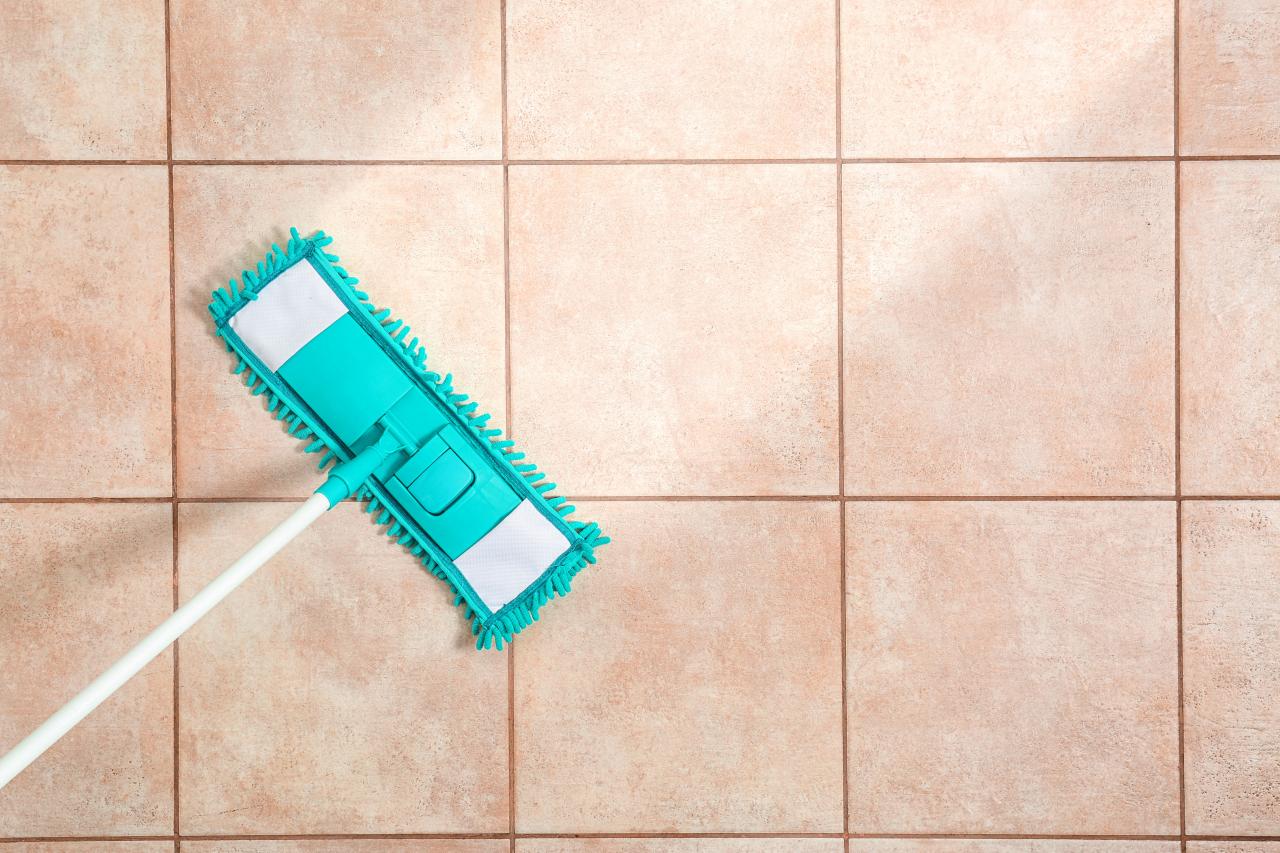Essential Tools and Supplies for Cleaning Bathroom Tile Floors
When it comes to cleaning bathroom tile floors, having the right tools and supplies is essential for achieving a sparkling clean result. Here are the must-have items you need to ensure an effective and efficient cleaning process:
- Broom or Vacuum Cleaner: Before starting the cleaning process, it’s important to remove loose dirt and debris from the floor. A broom or vacuum cleaner with a soft brush attachment can help you easily sweep away dust, hair, and other particles.
- Microfiber Mop: A microfiber mop is highly recommended for cleaning bathroom tile floors. Its soft and absorbent fibers can effectively trap dirt and grime, leaving your tiles spotless. Additionally, microfiber mops are easy to maneuver and can reach into tight corners and spaces.
- Scrub Brush: For stubborn stains and grout lines, a scrub brush with stiff bristles is a must-have tool. Look for a brush with an ergonomic handle for a comfortable grip and a variety of bristle lengths for different tile surfaces.
- All-Purpose Cleaner or Tile-Specific Cleaner: Choosing the right cleaning solution is crucial for achieving optimal results. An all-purpose cleaner can be used for general tile cleaning, while a tile-specific cleaner is recommended for deep cleaning and stain removal. Ensure that the cleaner is suitable for your specific tile material.
- Grout Brush or Toothbrush: To effectively clean grout lines, a grout brush or an old toothbrush is indispensable. Its small bristles can reach into crevices, removing dirt and grime that regular mopping might miss.
- Rubber Gloves: Protecting your hands is important, especially when using cleaning chemicals. Rubber gloves will shield your skin from irritants and keep your hands dry during the cleaning process.
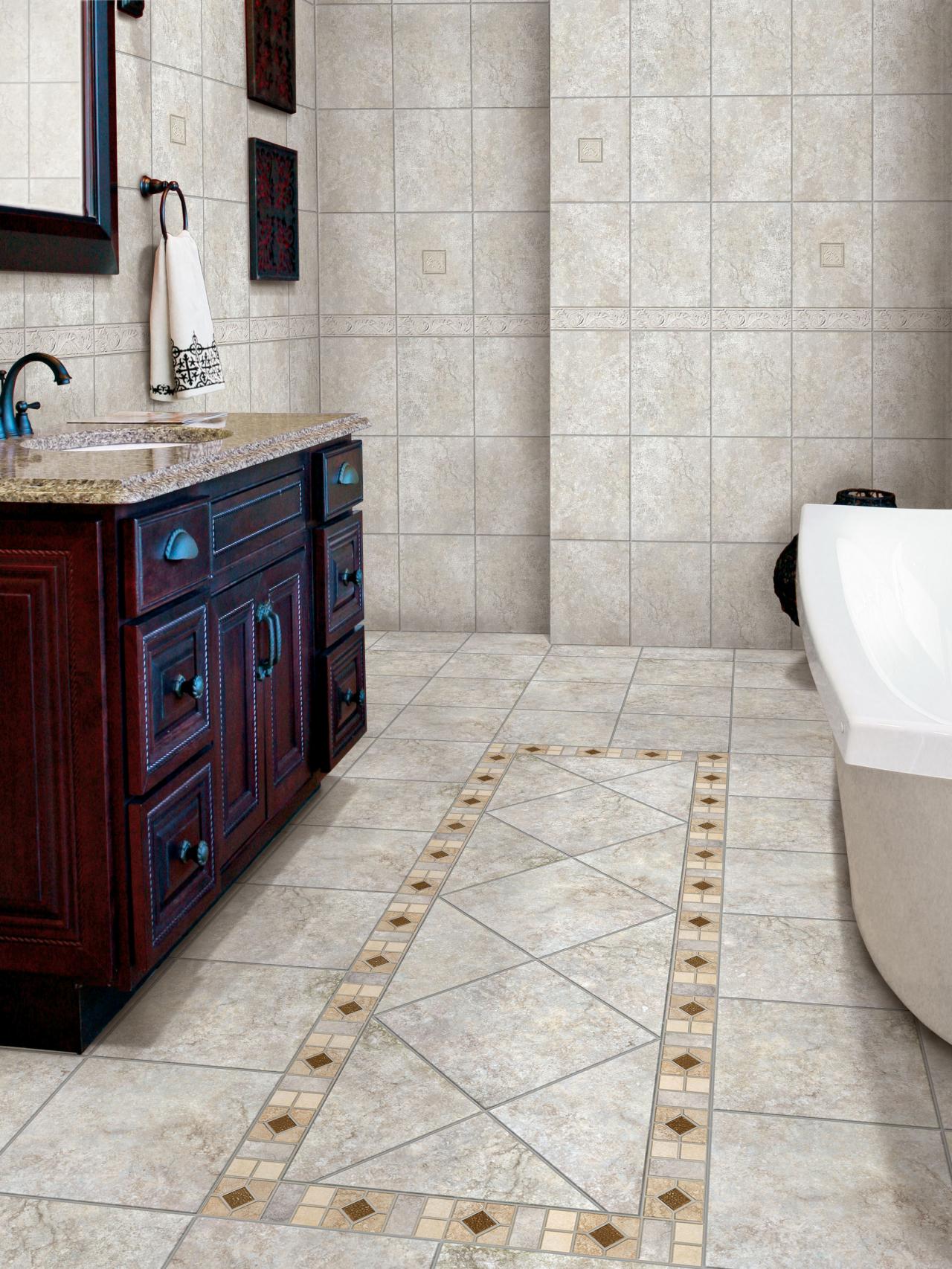
Step-by-Step Guide to Deep Cleaning Bathroom Tile Floors
Deep cleaning your bathroom tile floors is necessary to remove built-up grime, stains, and bacteria. Follow these step-by-step instructions to achieve a deep clean that will leave your floors looking and feeling fresh:
Clear the Area: Remove any rugs, mats, or furniture from the bathroom floor to grant easy access to the entire tile surface.
Sweep or Vacuum: Using a broom or vacuum cleaner, remove loose dirt, hair, and debris from the tile floor. Pay attention to corners and baseboards.
Prepare the Cleaning Solution: Mix a suitable cleaning solution according to the instructions on the product label. You can either use an all-purpose cleaner or a tile-specific cleaner, depending on your preference and the severity of the dirt.
Apply the Cleaner: Using a mop or sponge, apply the cleaning solution to the entire tile floor. Make sure to saturate the surface without leaving excess moisture that could damage the grout.
Let it Sit: Allow the cleaning solution to sit on the floor for a few minutes. This will help to loosen stubborn stains and grime.
Scrub the Floor: Using a scrub brush or toothbrush, scrub the tile surface, paying extra attention to grout lines and stained areas. Work in small sections and apply gentle pressure to avoid damaging the tiles.
Rinse Thoroughly: After scrubbing, rinse the floor with clean water to remove any residue from the cleaning solution. A mop or sponge can be used for this step.
Dry the Floor: Using a clean microfiber mop or towel, dry the tile floor thoroughly to prevent water spots and minimize the risk of slipping.
Replace Rugs and Mats: Once the floor is completely dry, place back any rugs or mats that were removed earlier.
Natural and Eco-Friendly Cleaning Solutions for Bathroom Tile Floors
If you prefer to use natural and eco-friendly cleaning solutions, there are several options available that are effective in cleaning bathroom tile floors without the use of harsh chemicals. Here are some natural alternatives that you can try:
Vinegar Solution: Mix equal parts of white vinegar and water in a spray bottle. Vinegar is a natural disinfectant and can effectively remove dirt and grime from tile surfaces. Spray the solution onto the floor, let it sit for a few minutes, then scrub and rinse thoroughly.
Baking Soda Paste: Create a paste by mixing baking soda with a small amount of water. Apply the paste to stained or heavily soiled areas, and scrub gently with a brush. Baking soda is a natural abrasive that can help remove tough stains and odors from tile surfaces.
Lemon Juice: Lemon juice has natural antibacterial properties and can help remove stains and soap scum from bathroom tile floors. Squeeze fresh lemon juice onto the floor, let it sit for a few minutes, then scrub and rinse thoroughly.
Hydrogen Peroxide: Hydrogen peroxide is a natural bleaching agent and can be effective in removing stains and disinfecting tile surfaces. Dilute hydrogen peroxide with water in a 1:1 ratio and apply it to the floor. Let it sit for a few minutes, then scrub and rinse thoroughly.
Tea Tree Oil: Tea tree oil is known for its antimicrobial properties and can be used to clean and disinfect bathroom tile floors. Mix a few drops of tea tree oil with water in a spray bottle. Spray the solution onto the floor, let it sit for a few minutes, then scrub and rinse thoroughly.
Steam Cleaning: Steam cleaning is an eco-friendly option that uses the power of steam to clean and sanitize tile floors. A steam cleaner can effectively remove dirt, grime, and bacteria without the need for chemicals. Follow the manufacturer’s instructions for safe and effective use.
Preventing Mold and Mildew on Bathroom Tile Floors
Mold and mildew thrive in damp and humid environments, making bathroom tile floors susceptible to their growth. Preventing mold and mildew is essential for maintaining clean and healthy tile floors. Here are some tips and tricks to help you keep mold and mildew at bay:
Proper Ventilation: Ensure that your bathroom is well-ventilated to reduce excess moisture. Open windows or use exhaust fans during and after showers to allow steam to escape. This will help to keep the bathroom environment dry and prevent mold and mildew growth.
Regular Cleaning: Regularly clean your bathroom tile floors to remove dirt, grime, and any moisture that may promote mold and mildew growth. Use a mildew-resistant cleaner or a mixture of vinegar and water to disinfect and prevent mold and mildew.
Dry the Floor: After cleaning or any water-related activities in the bathroom, make sure to dry the tile floor thoroughly. Use a towel or mop to remove excess moisture. Pay extra attention to the grout lines, as they can absorb water and become a breeding ground for mold and mildew.
Seal the Grout: Grout lines are particularly susceptible to mold and mildew growth. Consider applying a grout sealer to protect the grout and make it more resistant to moisture. This will help prevent mold and mildew from taking hold in the porous grout lines.
Use a Squeegee: After showers or baths, use a squeegee to remove excess water from the tile surface. This simple step can prevent water from pooling and seeping into the grout lines, reducing the risk of mold and mildew growth.
Keep Bathroom Accessories Dry: Ensure that bathroom rugs, towels, and other accessories are kept dry. Hang towels to dry after use, and wash bathroom rugs regularly to prevent moisture buildup. Avoid leaving wet items on the bathroom floor, as they can contribute to a damp environment.
Maintenance Tips for Keeping Your Bathroom Tile Floors Sparkling Clean
Regular maintenance is key to keeping your bathroom tile floors looking sparkling clean. By following these maintenance tips, you can prolong the life of your tiles and keep them looking their best:
Sweep or Vacuum Regularly: Make it a habit to sweep or vacuum your bathroom tile floors regularly to remove loose dirt, hair, and debris. This will prevent it from accumulating and scratching the surface of your tiles.
Wipe up Spills Promptly: Accidents happen, but it’s important to wipe up spills as soon as they occur. This will prevent liquids from seeping into the grout lines or staining the tiles.
Use Mild Cleaners: When cleaning your bathroom tile floors, opt for mild cleaners that are specifically formulated for tile surfaces. Harsh chemicals can damage the tiles and grout over time.
Avoid Abrasive Tools: Steer clear of abrasive tools, such as steel wool or harsh scrub brushes, as they can scratch and damage the tiles. Instead, use soft cloths or non-abrasive sponges for regular cleaning.
Test Cleaning Products: Before using a new cleaning product on your bathroom tile floors, always test it in a small, inconspicuous area. This will help you ensure that the product is safe to use and won’t cause any damage or discoloration.
Regularly Inspect and Repair Grout: Inspect the grout lines of your bathroom tile floors regularly for any signs of damage or deterioration. If you notice any cracks or crumbling grout, repair it promptly to prevent further damage and potential water seepage.
Common Mistakes to Avoid
When it comes to cleaning bathroom tile floors, it’s important to be aware of common mistakes that can hinder your cleaning efforts. By avoiding these mistakes, you can ensure that your bathroom tile floors are cleaned effectively and maintain their shine. Here are some common mistakes to avoid:
Using Harsh Chemicals: One common mistake is using harsh chemicals that can damage the tile surface or discolor the grout. It’s important to choose cleaning products that are specifically formulated for tile surfaces and follow the instructions carefully. Avoid using abrasive cleaners or bleach, as they can cause damage over time.
Neglecting Regular Cleaning: Another mistake is neglecting regular cleaning of bathroom tile floors. Dirt, grime, and soap scum can build up over time, making it more difficult to clean. By establishing a regular cleaning routine, you can prevent the accumulation of dirt and maintain the cleanliness of your tile floors.
Using Excessive Water: Using excessive water during the cleaning process is a common mistake that can lead to water seeping into the grout lines and causing damage. It’s important to use a damp mop or sponge rather than soaking the floor with water. Additionally, make sure to dry the floor thoroughly after cleaning to prevent water spots and minimize the risk of slipping.
Neglecting Grout Cleaning: Many people overlook the importance of cleaning the grout lines between the tiles. Grout is porous and can easily absorb dirt, stains, and moisture, leading to discoloration and the growth of mold and mildew. Regularly clean the grout lines using a grout brush or toothbrush and a mildew-resistant cleaner to keep them looking fresh and prevent the growth of mold and mildew.
Using Abrasive Tools: Using abrasive tools, such as steel wool or harsh scrub brushes, can scratch and damage the tile surface. It’s important to use soft cloths or non-abrasive sponges for regular cleaning. If you encounter stubborn stains or grime, opt for a scrub brush with soft bristles that won’t harm the tiles.
Not Protecting the Floor: Failing to protect the bathroom tile floor from potential damage is another common mistake. When moving heavy objects or using tools that could scratch or chip the tiles, it’s important to use protective measures such as using furniture pads or placing a mat or towel under the objects. This will help prevent any accidental damage to the tile surface.
How to Clean Tile Floors
How to Clean Tiled Floors with Vinegar Cleaning Guides by Fantastic!
Best Way to Clean Tile Floors BISSELL® Tips
How to Clean a Bathroom Floor
How to clean bathroom tiles: methods and tips – Ideas by Mr Right
How to Clean Ceramic Tile Floors HGTV
HOW TO CLEAN BATHROOM TILES AT HOME
Related Posts:
- Removing Bathroom Tiles Without Breaking Them
- Home Bathroom Tiles Design
- Changing Bathroom Tile Color
- Bathroom Tile Shower And Floor
- Modern Bathroom Tile Floor
- Bathroom Tile Floor Pattern Ideas
- Bathroom Tiles For Shower Stall
- Painting Bathroom Tile Rustoleum
- Bathroom Tile Selection Ideas
- Painting Bathroom Tiles Ideas


